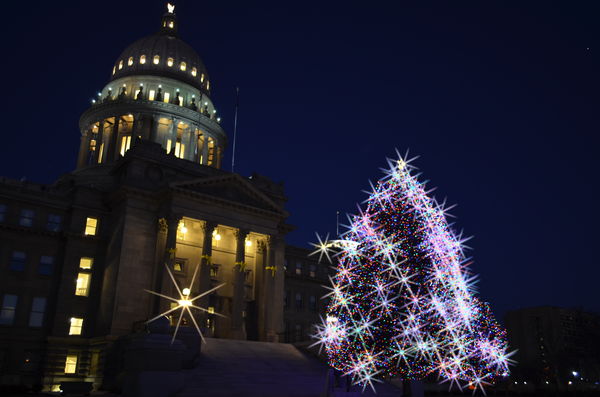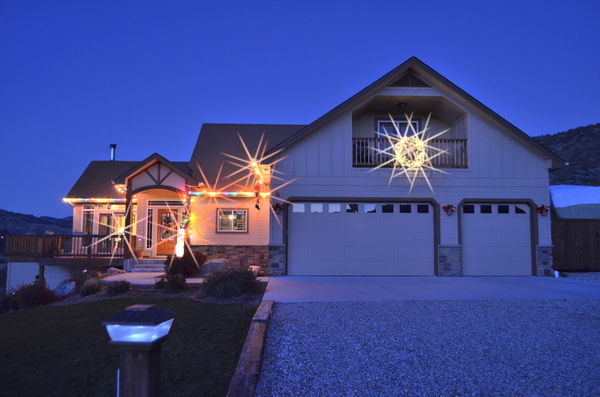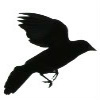Multiple Exposure vs HDR
Dec 16, 2011 10:01:12 #
A question about HDR photography: My camera only allows for three-shot bracketing, but I can vary the distance between those shots ... ranging from .5 to 2.0 EV. I always shoot such photos using a good tripod. What setting is likely to produce the best final photo? My goal is the best quality photo my equipment is capable of. (Using a Pentax K2000 and any one of a variety of lenses.)
Dec 16, 2011 10:03:38 #
I hadn't thought of trying the multiple exposures as an alternative to HDR. I think it is worth trying. I am not sure my camera will allow it automating the exposure bracketing...easy to check.
My Nikon D5100 has a built-in HDR. It only uses 2 exposures. I haven't been impressed with the results. I see many new cameras coming out with more capability for this. I suspect in a couple of years most cameras will have a much stronger capabiltiy for this built in.
The Nikon D5100 also has a thing called "Active D-lighting". I have been impressed by what it does to bring out the detail in shadows. I leave it on "Auto" most of the time.
Regards,
Larry Leach
My Nikon D5100 has a built-in HDR. It only uses 2 exposures. I haven't been impressed with the results. I see many new cameras coming out with more capability for this. I suspect in a couple of years most cameras will have a much stronger capabiltiy for this built in.
The Nikon D5100 also has a thing called "Active D-lighting". I have been impressed by what it does to bring out the detail in shadows. I leave it on "Auto" most of the time.
Regards,
Larry Leach
JimKing wrote:
Some digital cameras will allow you to take multip... (show quote)
Dec 16, 2011 10:05:17 #
If you want more shots you can take multiple sets of brackets with different EV ratings and throw out the extra nominal shots before processing.
Jack Disbrow wrote:
A question about HDR photography: My camera only allows for three-shot bracketing, but I can vary the distance between those shots ... ranging from .5 to 2.0 EV. I always shoot such photos using a good tripod. What setting is likely to produce the best final photo? My goal is the best quality photo my equipment is capable of. (Using a Pentax K2000 and any one of a variety of lenses.)
Dec 16, 2011 10:21:19 #
Good thought. I am a bit nervous about even touching the camera while shooting the necessary shots for combination. I'll give that a try in any case. I've been using a Pentax auto focus lens, but next I'll try one of our older (and usually better) Pentax lenses.
Dec 16, 2011 10:26:54 #
As an aside, one of my more current photo instruction books discusses HDR briefly, and shows a large color photo of a kitchen interior with a large window looking out on a back yard. Everything is in perfect focus and - more important here - in perfect exposure. How? The writer says that the photo required seven separate exposures, combined using HDR software, and the results show it.
Dec 16, 2011 10:47:06 #
I used the double exposure to do Christmas tree shots. One with the lights on and then with them off. Unerexposed shots with lights on. This way the tree showed both lights and ornaments. - Dave
Dec 16, 2011 10:53:06 #
Dec 16, 2011 11:11:44 #
You do want to turn off your autofocus for HDR.
And as you probably know you want to use apeture priority and fix your ISO if necessary so the EV adjusts are in exposure time only.
Regards,
Larry Leach
And as you probably know you want to use apeture priority and fix your ISO if necessary so the EV adjusts are in exposure time only.
Regards,
Larry Leach
Jack Disbrow wrote:
Good thought. I am a bit nervous about even touching the camera while shooting the necessary shots for combination. I'll give that a try in any case. I've been using a Pentax auto focus lens, but next I'll try one of our older (and usually better) Pentax lenses.
Dec 16, 2011 11:17:14 #
Oops
wilsondl2 wrote:
I used the double exposure to do Christmas tree shots. One with the lights on and then with them off. Unerexposed shots with lights on. This way the tree showed both lights and ornaments. - Dave
Dec 16, 2011 11:17:49 #
Thanks for the reminder! This HDR is a new thing for me, so all remindeers and suggestions are helpful.
Dec 16, 2011 11:18:27 #
I like that idea. I'll try it verses the Active D-lighting and in-camera HDR.
At this point I did my job (tree and lights) last week but my better half is only working the ornaments as I type. I might try in the day vs. night also.
And with and without flash.
Just to again mention the cross hatch filter if you have it. Kind of cool.
At this point I did my job (tree and lights) last week but my better half is only working the ornaments as I type. I might try in the day vs. night also.
And with and without flash.
Just to again mention the cross hatch filter if you have it. Kind of cool.
wilsondl2 wrote:
I used the double exposure to do Christmas tree shots. One with the lights on and then with them off. Unerexposed shots with lights on. This way the tree showed both lights and ornaments. - Dave
Cross Hatch Filter on Idaho State Tree

Dec 16, 2011 11:27:25 #
Also with Active D-lighting to brighten the background. With the D5100 you can set this on for taking the pictures or apply it in-camera as a touch-up filter, which I did here.
Another Cross Hatch Example

Dec 16, 2011 11:39:48 #
Ooops, sorry for the last few posts. I was in a discussion on Christmas tree lights and meant those posts to go there. Cross hatched my post. ;-)
Dec 16, 2011 11:56:19 #
Jack Disbrow wrote:
As an aside, one of my more current photo instruction books discusses HDR briefly, and shows a large color photo of a kitchen interior with a large window looking out on a back yard. Everything is in perfect focus and - more important here - in perfect exposure. How? The writer says that the photo required seven separate exposures, combined using HDR software, and the results show it.
Well, that's the concept behind HDR as far as the perfect exposure goes. To bring those (in this case, 7) exposures together results in both the highlights and shadows being brought to a level where it is similar to what the eye sees.
The sharpness has little to nothing to do with HDR. That is either done straight from camera or a sharpening process done prior to tonemapping (the HDR process of getting 'the look').
Dec 16, 2011 12:12:58 #
docrob
Loc: Durango, Colorado
BboH wrote:
I use a Nikon camera which will make multiple exposures. Given I go through the same process, (changing my settings after each snap) whether I am making a multiple exposure image or bracketed images, why should I do HRD in PP rather than just making and using the multiple exposure?
My camera will make the multiple exposure in either raw or JPEJ.
My camera will make the multiple exposure in either raw or JPEJ.
HRD and ME are not the same and have potentially very different effects. HRD is a software program. You feed it the different exposures and it combines them according to the algorhythm.
Multiple exposures on the other hand are more akin to the old slide sandwiching techniques and produce very different effects. One is computer generated the other is created by the photographer. One takes lots of play and work the other takes 3 images a good computer and software.
If you want to reply, then register here. Registration is free and your account is created instantly, so you can post right away.



